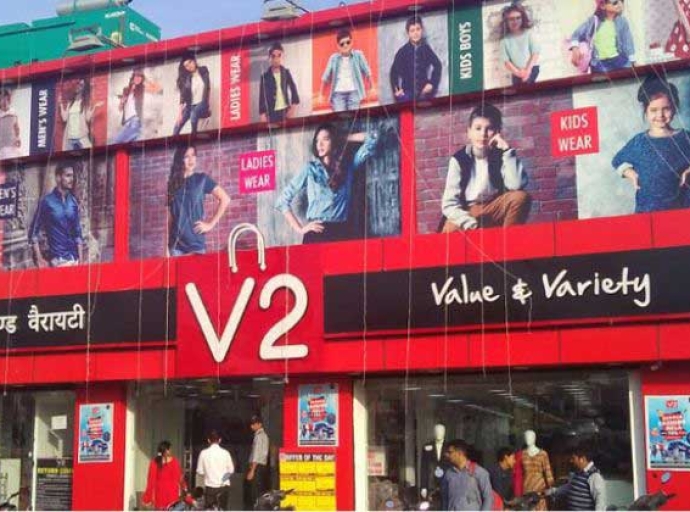31 October 2022, Mumbai:
What shapes today's intimate wear is a growing overall hygiene consciousness on account of growing fears of the prevalence of dermatological conditions amongst the users/wearers, ever-changing global demographic dividend, Changing Paradigm of Consumer Behaviour and evolving recognition of product portfolio customization are taking this sector in the future.
Growth drivers
What is further driving this trade landscape is emerging technologies. new developments around fit, product measurement, techniques involving designs and underpinning of effective/productive production methods focused on unit economics, innovation-led choice of materials/inputs all the way transforming a quality product range, and fostering new use cases/applications significant to the intimate wear space.
The sector witnessing the growing opportunities on a sustained basis is striving to keep invested in pivotal areas such as the manufacturing fabric looking after the product attributes like the comfort of the wearer and betting big on some of the other desired key parameters to ring in cheers.
Helicopter View
According to a new report published by Allied Market Research, titled, Intimate Wear Market by Gender (Women and Men), Age Group (1317 Years, 1835 Years, and 36 Years & Above), Price (Luxury, Super-Premium, Premium, Medium, Economy, and Low), Distribution Channel (Mass Merchandizers, Mono brand Stores, Specialized Stores, and Others): Global Opportunity Analysis and Industry Forecast, 2018-2025 the global intimate wear market is expected to generate $325.36 billion by 2025, growing at a CAGR of 8.1% from 2018 to 2025. In 2017, Asia-Pacific led the intimate wear market, followed by North America. Growth in the region is supplemented by an increase in national per capita disposable income and growth in fashion consciousness among the young generation.
What's Trending
Intimate wear is a second skin, for instance, German lingerie designs show a new trend toward muted colors such as earthy tones, navy blue, and pastel colors. Lingerie designers are coming up with many unique designs that are embroidered and have two-tone color patterns and most of them are asymmetrical.
Animal prints and organic shapes combined with geometrical patterns are also in fashion.
Distribution funnel
The article also harps on the trade's conventional and evolving multi-modal distribution aspect spanning from one hand mass merchandizing, single-brand retail stores, and specialized retailing up until now, to e-tailing and others like omnification of the process.
Different trade studies have reflected that" The mass merchandisers encompassing hypermarket, supermarkets constitute some 50% of the intimate wear sales pie and is secularly expected to rule the roost for now".
Data Points
The industry studies have very interesting data to offer," The women's intimate wear sector is projected to grow at a CAGR of 8.5% on an annualized basis. Make no mistake the lingerie segment accounts for more than 50% of women's intimate wear market share and the same is projected to grow at a CAGR of 8.0%. Interestingly sportswear demand only gets bigger owing to the inherent features of the comfort product offers, where it is estimated to clock a rise of 9.1% CAGR during the said period.
Whilst the staple/mass product line segment contributes some 47% and is projected to grow at a CAGR of 7.4%.
The trade further shed light on Asia-Pacific (APAC) zone expected to be a serious growth territory in the global intimate wear market, thanks to rising Asia and so forth giving hopes for an impressive CAGR of 9.9% in the projected period of 2018 to 2025.
More notably, China did the heavy lifting contributing as high as approximately 50% in the Asia-Pacific intimate wear market, way back in 2017 to make a strong case for proving its emergence across the APAC region.
Stepping back into 2017 another set of hard data projecting value growth comes as an insightful revelation about Asia-Pacific (APAC) and LAMEA jointly accounting for say around 45% share of the global intimate wear market.
Go to destination
As it is said the deal is not done till it is not done.
The article looks at the humongous growth story & size of opportunity dwelling on the biggest challenge posed to global value chains gauging how is sourcing world is stacked up; frowning upon anything which does not set aside prejudices seeking complementarities in this time-drawn exercise of putting supply chains in place & realizing full potential.
International apparel firms are doubling down on their investments in Sri Lanka. They are expanding their production capacities, sending a positive signal establishing that, albeit the island nation underwent recently a historic political crisis & economic meltdown yet it is still central to global intimate wear manufacturing.
In addition, the factors like labour arbitrage, skilled workforce, supportive producing conditions along with access to requisite raw materials make sense attracting to international players seeking to outsource/set up their manufacturing units in emerging/developing countries such as India where incentives/sops like 'Make in India campaign" offering compelling story help securing it earn the tag of supply chains credible preferred partners.
Latest Publications


































